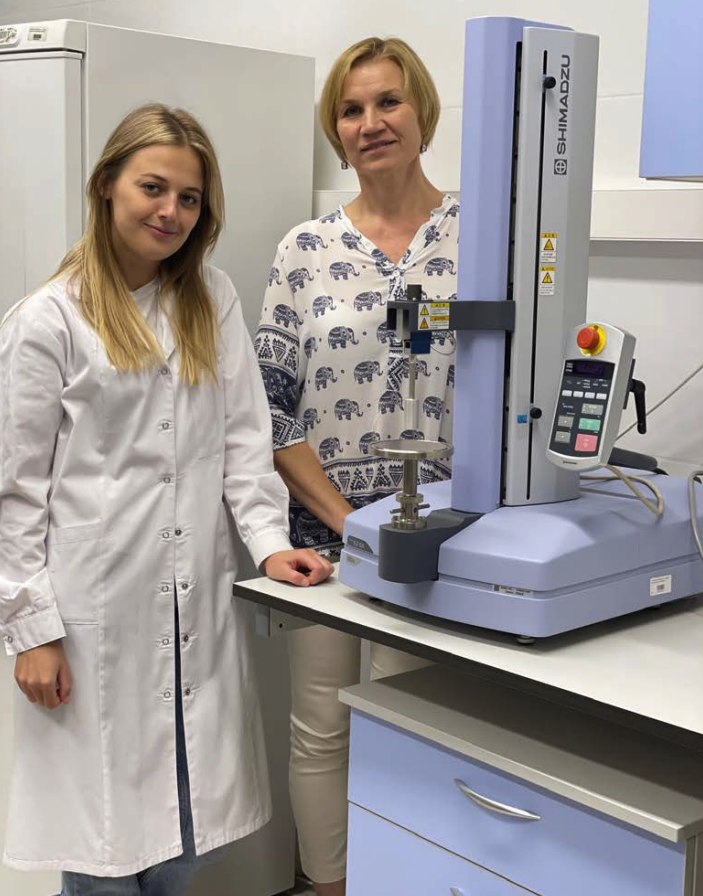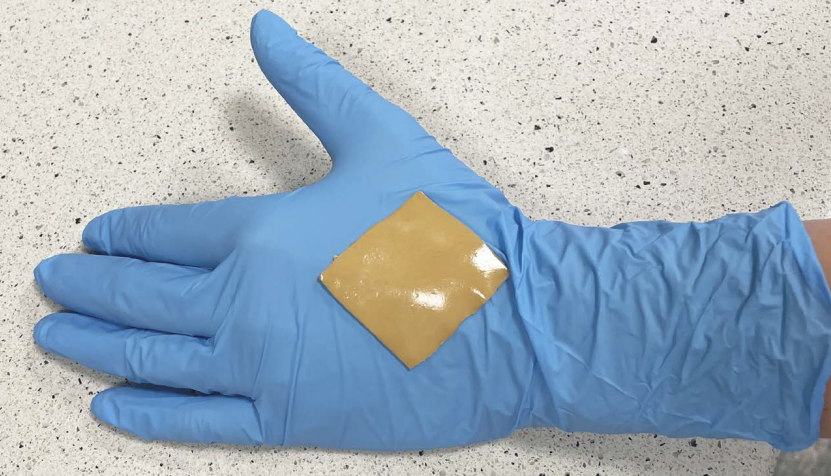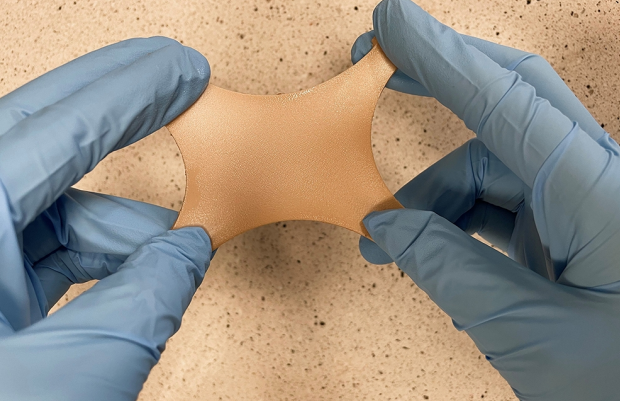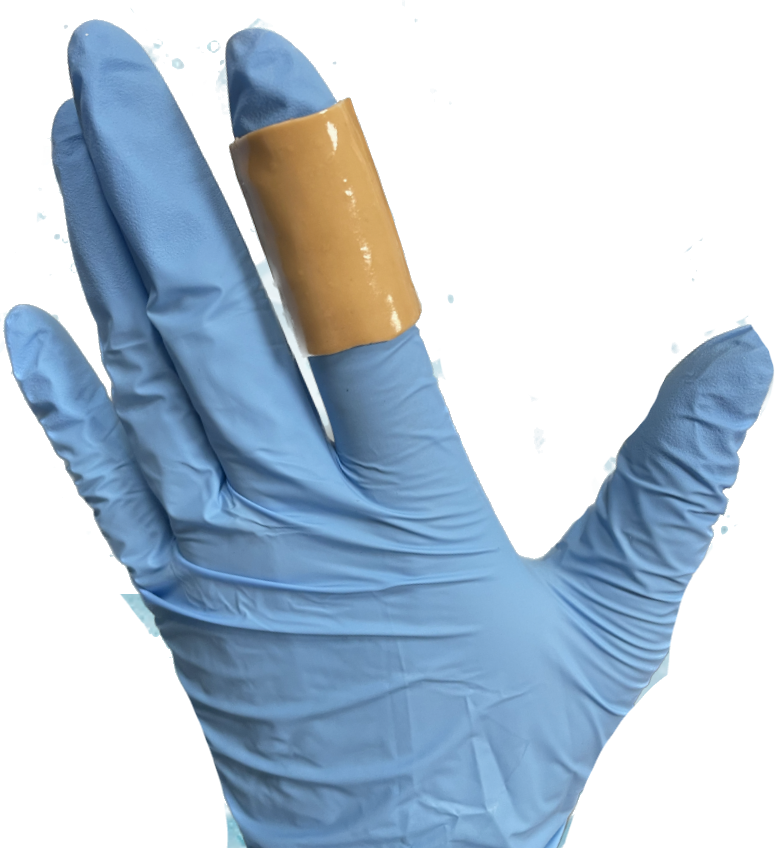Environmentally friendly and human-safe materials for regenerative medicine
Treating infected wounds with stretchable and antibacterial dressing
Anna Michalicha, Prof. Dr. Anna Belcarz, Medical University of Lublin
Despite the intense development of the biomaterials sector, wound management is a great challenge worldwide, laying a huge financial burden in all countries. One of the significant challenges that medicine has to face up until the 21st century is that conventional wound dressings facilitate the wound healing but not as efficiently as expected. Smart hydrogel wound dressings, such as stimuli-responsive and self-healing materials, may help to solve this problem. The development of a dressing prototype with antimicrobial potential that is able to respond to changes in the pH of the environment and is flexible and time-efficient when changing may be a great milestone in this field.
Dressings for difficult wounds – enhancing old solutions with natural components
Each of us, at least once in our lives, secured a wound with a bandage. Such products are well known and have accompanied us since childhood. Dressings are designed to treat a variety of wounds, from very harmless to infected and deadly ones. One of the significant challenges that medicine has to face up until the 21st century is that conventional wound dressings (e.g. bandages, foams, hydrogels) facilitate wound healing but not as efficiently as expected. Another significant challenge in the area of wound dressing design and improvement is the increasing problem of bacterial resistance to conventional drugs (mainly antibiotics) used in the treatment of infections. In fact, this problem concerns more fields of the public health system, not just the branch of wound treatment, and generates significant healthcare expenses.
Wound treatment difficulties are caused by acute wounds turning into chronic wounds as a consequence of extended healing. Infections often hinder the formation of blood vessels and thus the entire process of wound healing. Wound dressings, as of right now, demand the addition of extra antibacterial agents to act effectively against bacterial infection during the wound healing process. Nanosilver is one of the currently used alternatives to antibiotics when it comes to antibacterial protection of the wound healing area. Besides, some polymers (for example chitosan) show low antimicrobial properties themselves due to their cationic nature but low mechanical resistance. Therefore, it seems to be crucial to develop wound dressings with strong antibacterial properties toward a wide spectrum of bacteria without further supplementation. Moreover, the actual gold standard for new-generation biomaterials is their ease of biodegradation. It’s particularly useful for patients with chronic wounds or wounds that require extended healing times.
Smart hydrogel wound dressings (SHWDs), such as stimuliresponsive and self-healing materials, may help to solve this problem. Hydrogel-based formula wound dressing materials have gained popularity in the last decades. Actually, there have been many wound dressing materials based on natural polymers. However, they are characterized by many limitations. Scientists worldwide are working on inventing new SHWDs (also called intelligent wound dressings) that address the issues of infection, exudate and bleeding in skin wounds with self-healing properties.
A potential solution to this problem is a two-component hydrogel composed of polysaccharide and tannic acid (a phenolic derivative). Both ingredients are widely used: as food additives, anticorrosive agents, in the dyeing process, in alcoholic and non-alcoholic beverages, frozen dairy products, soft and hard candy or meat products. Tannic acid was used in the 1920s as an antibacterial agent in burn wound treatment. In some studies, the use of tannic acid in severe burn cases has been found to reduce burn mortality from approximately 35 to 11 %. After World War II, the use of tannic acid was abandoned due to the widespread use of antibiotics. However, more recently, there has been a resurgence of research on this interesting natural compound.


Two-compound hydrogel with antibacterial properties and hemostatic effect
As a team focused on designing new biomaterials and modifying existing ones, Dr. Anna Belcarz, professor at the Medical University of Lublin, and Anna Michalicha, Ph.D. student at the Medical University of Lublin’s Doctoral School, created such a two-compound hydrogel. It can be shaped into a thin dressing with a thickness of 2–3 mm and high elasticity. The dressing adheres to the skin spontaneously, releases (in a pH-dependent manner) tannic acid as an astringent and antibacterial agent and absorbs a significant amount of exudate from the wound. The team used their long-time experience in the evaluation of antibacterial properties of biomaterials and expertise in investigating the interactions of these biomaterials with human blood for the testing of the new hydrogel. It is worth noting that the antibacterial activity of tannic acid is nonspecific, so it acts against all bacteria, including those that are antibiotic-resistant ones. Additionally, the invented hydrogel inhibits bleeding from the wound (hemostatic effect). This combination of properties makes it a promising candidate for the treatment of open, exuding and bleeding wounds that are susceptible to bacterial infections. This strategy for the treatment of difficult-to-treat, infected and bleeding wounds is likely to improve the quality of life for patients and bring benefits to the future of medicine.
Enhancing the mechanical aspects of wound dressings with the Shimadzu texture analyzer
However, these are not the only important features for potential wound dressings. According to the co-author of the invention, Dr. Anna Belcarz, professor at the Medical University of Lublin, “Dressings applied to wounds located in different parts of the body are subjected to crushing and squeezing. Additionally, when applied to the neck, elbows, knees, knuckles and other moving parts of the body, they must also withstand repeated stretching without damaging the structure. Therefore, one of the most important characteristics of dressings is their adequate mechanical strength, including compression and stretching.” To determine the values of these parameters, an appropriate tool should be used. For this purpose, the Shimadzu texture analyzer is used in the Department of Biochemistry and Biotechnology at the Medical University of Lublin.
„The EZ-SX texture analyzer is the ideal tool for determining these important parameters,” says Anna Michalicha, Ph.D. student at the Medical University of Lublin’s Doctoral School. “This device is relatively small and adjustable. Its operation is simple and intuitive, it can be quickly learned, and working with it is a pleasure. The data obtained during the measurement can then be subjected to multiple analyses depending on the required information.”

